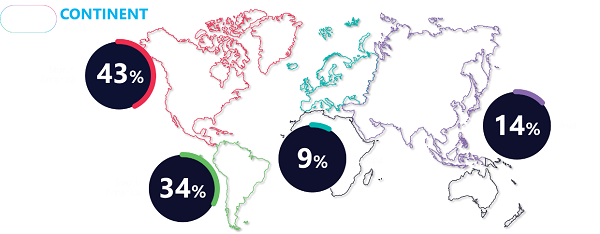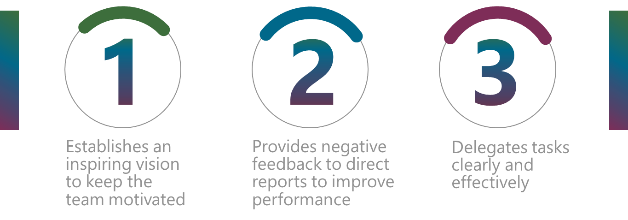ATD Blog
Revolutionizing Talent Development: A Whirlpool Case Study
Wed Apr 25 2018

As talent development (TD) professionals, we know that organizations are increasingly global and connected. We also see the growing need to fill the talent pools strategically, considering different geographies, cultures, and businesses, to secure the future of our companies. In this context, we need to find universal means capable of developing leaders for the world, not just for our local reality. In this blog post, I want to share how I helped to build a successful global leadership program, and present the tools and methodologies that have helped my team and me prepare professionals from different places and cultures to be extraordinary leaders.
In 2005, Crescimentum, a Brazilian consultancy, revolutionized the local TD market by creating the first leadership program in immersion format: The Leader of the Future. Since then, we have trained more than 5,000 leaders from various companies, segments, and even nationalities. In 2015, we started a process of development together with Whirlpool Corporation. At the time, the head of HR in Brazil had the challenge of accelerating and maximizing the development of managers and employees mapped in their talent pool.
After the absolute success of the first program, which accelerated the readiness of 41 percent of the participants and supported the evolution of 75 percent of the leaders in their internal evaluation, the need to transform this action into a global program capable of developing and preparing any leader in the organization was evident. Thus, the Global Leader of the Future Program was launched, training so far more than 200 leaders from countries like China, Italy, Mexico, India, Russia, the United States, Pakistan, the Netherlands, and Peru. The nationalities are varied, and the overall distribution is illustrated below:


The success of this global project is due to the project team. For this training, we brought together professionals from Brazil, Australia, the United States, and the United Kingdom. This generated from the beginning not only credibility in the global scope of the program, but also confidence on the part of the participants, who managed to create empathy with the coaches. (And we know that connection and empathy are essential points for people development.) Despite so many cultural, ethnic, and gender differences, we created a successful global program with a unique methodology that works in practice. How did we do it? We combined a simulation of organizational reality, neuroscience principles, assumptions of neuro linguistic programming (NLP), and coaching with cutting-edge people management tools inspired by the global references in leadership development. The result, according to the project's sponsor, was "the best leadership program ever conducted at Whirlpool."
You might be thinking, "Great, but I want to know the details—and especially how you have developed people from such diverse places." The answer is simple. All my personal concerns and those of my team were diluted as we realized that, no matter what country the leader is in and where that leader comes from, leaders in general have the same beliefs and difficulties. Leaders will likely have difficulty delegating, giving direct feedback, and questioning the team (rather than executing for them). This is backed up by facts and figures. According to the survey held with the program participants, the lowest scores were obtained in the following areas:

Not surprisingly, I saw that these are the same gaps I have identified over a period of more than 15 years in Brazilian leaders. All in all, I realized that fears and insecurities are the same for leaders regardless of the culture or geography they represent; and the differences we once believed to be immense tend to be rather theoretical than true in practice. So, what were the critical success factors for this program to work out? After realizing that leaders have the same gaps and difficulties, my team and I applied the methodology and resources proven to be successful.
Start with a reason that makes sense for each leader. I believe that all leadership skills should make sense first for each participant. We know that organizations expect leaders to give feedback and delegate, among other things, but each tool must make sense in the context of the vision the leader builds for himself. In this global program and in the other trainings we conduct in Brazil, we always start by asking the participants, “What kind of leader do you want to be? How do you want to be remembered by your team? What legacy do you intend to leave? What is your mission to lead?” Only after answering these and other questions will the participants be able to assess for themselves whether they need to learn the leadership skills we aim to develop.
Provide means for participants to leave their comfort zone. Since 2005, we have built expertise in using unconventional tools, so to speak. In this global program it was no different, and the participants had to face challenges ranging from building business plans to a diverse array of activities, such as creating jingles, physical activity in the morning (usually before 7 a.m.), and meditation, while trying to stay on top of an intense and demanding workload (as is the reality of leaders of large organizations around the world). Our objective with all this was to provide a felt experience of the contents we teach and truly simulate the corporate reality. In this sense, the training is not just another chance to learn incredible tools, it´s also a time for each individual to realize how they act daily and comprehend the impact of their behaviors on those around them.
Make it possible for each person to truly experience the power of feedback. As I mentioned earlier, giving feedback was one of the gaps of the leaders of this global program, and for each proposed activity and challenge, they received feedback from my team's consultants and were also encouraged to exchange feedback with each other. This constant feedback exchange makes a critical difference and accelerates the development of each individual. Incredibly, even the most reluctant participants understand that their behaviors repeat themselves and are sensitized to change some behaviors.
With these three tips in mind, you can begin to build your own global leadership program.
For a deeper dive into this story, join me at ATD 2018 International Conference & Exposition for the session, Revolutionizing Talent Development: A Case Study.
